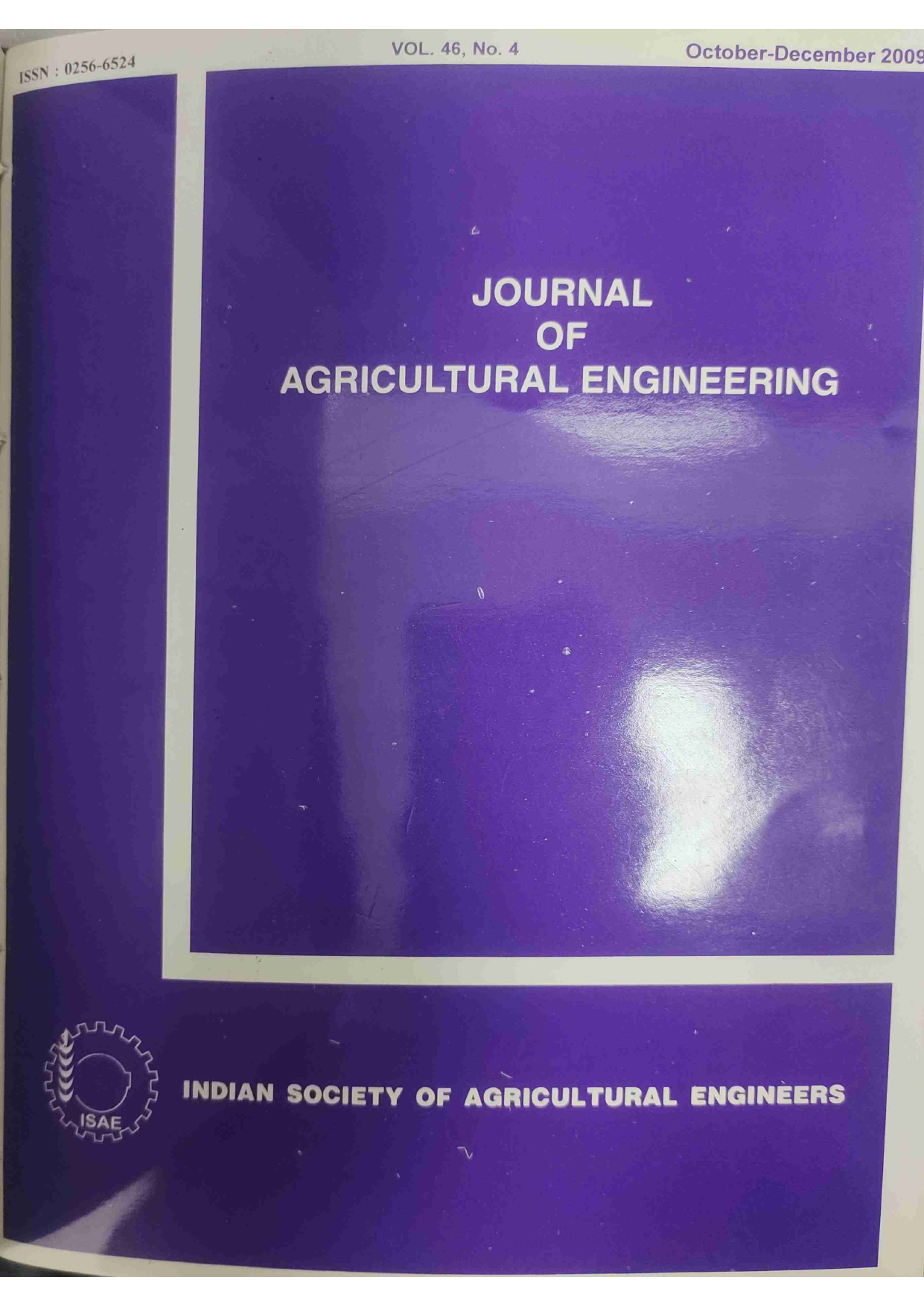Modelling Sensitivity of Stream flow to Climate Change in the Brahmani River Basin
DOI:
https://doi.org/10.52151/jae2009464.1393Abstract
It is widely accepted that increasing concentration of greenhouse gases in the atmosphere is causing climate change, which may alter the hydrologic cycle and regional water availability. Hydrological modelling to assess the sensitivity of stream flow in the Brahmani basin to different hypothetical climate change scenarios indicated significant changes in mean monthly stream flow. Simulation results indicated 76% increase in annual stream flow with a 30% increase in rainfall and no change in temperature, and a maximum decrease of 33% in annual stream flow with 4°C increase in temperature and 10% decrease in rainfall. Rainfall changes had a greater effect on seasonal as well as annual changes in stream flow than the changes in temperature.
References
Aggarwal PK; Joshi PK; Ingram, JSI; Gupta, RK. 2004. Adapting food systems of the Indo-Gangetic plains to global environmental change: Key information needs to improve policy formulation. Environmental Science and Policy, 7, 487-498.
IPCC. 2007. Climate change 2007: the physical science basis. Contribution of Working Group I to the Fourth Assessment Report of the Intergovernmental Panel on Climate Change (IPCC), Cambridge University Press, Cambridge, U.K., pp 881.
Leavesley GH; Lichty RW; Troutman BM; Saindon LG. 1983. Precipitation-Runoff Modeling System: User’s Manual. U. S. Geological Survey Investigation Report 83-4238, pp 207.
Leavesley GH; Restrepo PJ; Markstrom SL; Dixon M; Stannard LG. 1996. The Modular Modeling System (MMS): User’s Manual. U. S. Geological Survey Openfile Report, 96-151.
Legates D R; Gregory J M.1999. Evaluating the use of “goodness-of-fit” measures in hydrologic and hydroclimatic model validation. Water Resources Research, 35(1), 233-241.
Mehrotra R. 1999. Sensitivity of runoff, soil moisture and reservoir design to climate changes in central Indian River basins. Climatic Change, 42, 725-757.
Mirza M Q. 1997. The runoff sensitivity of the Ganges river basin to climate change and its implications. J. of Environmental Hydrology, 5, 1-13.
MOEF. 2004. India’s Initial National Communication to the United Nations Framework Convention on Climate Change. Ministry of Environment and Forests, Government of India, New Delhi.
Seidel K; Martinec J; Baumgartner M F. 2000. Modelling runoff and impact of climate change in large Himalayan basins. Proceedings of the International Conference on Integrated Water Resources Management for Sustainable Development, December 19-21, New Delhi, India, 1020-1028.
Sharma KP; Vorosmarty CJ; Moore B. 2000. Sensitivity of the Himalayan hydrology to land-use and climatic changes. Climatic Change, 47, 117-139.
Sikka AK; Dhruva Narayana V V. 1988. Climatic impacts on water resources and impact mitigation strategies. Proceedings of the UNEP/INSA Sponsored Workshop on Climate Impacts Study, March 16-18, New Delhi, India.














